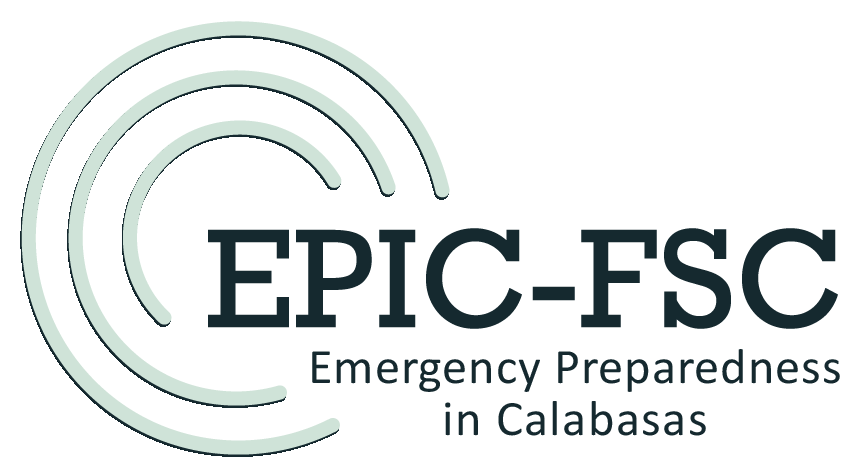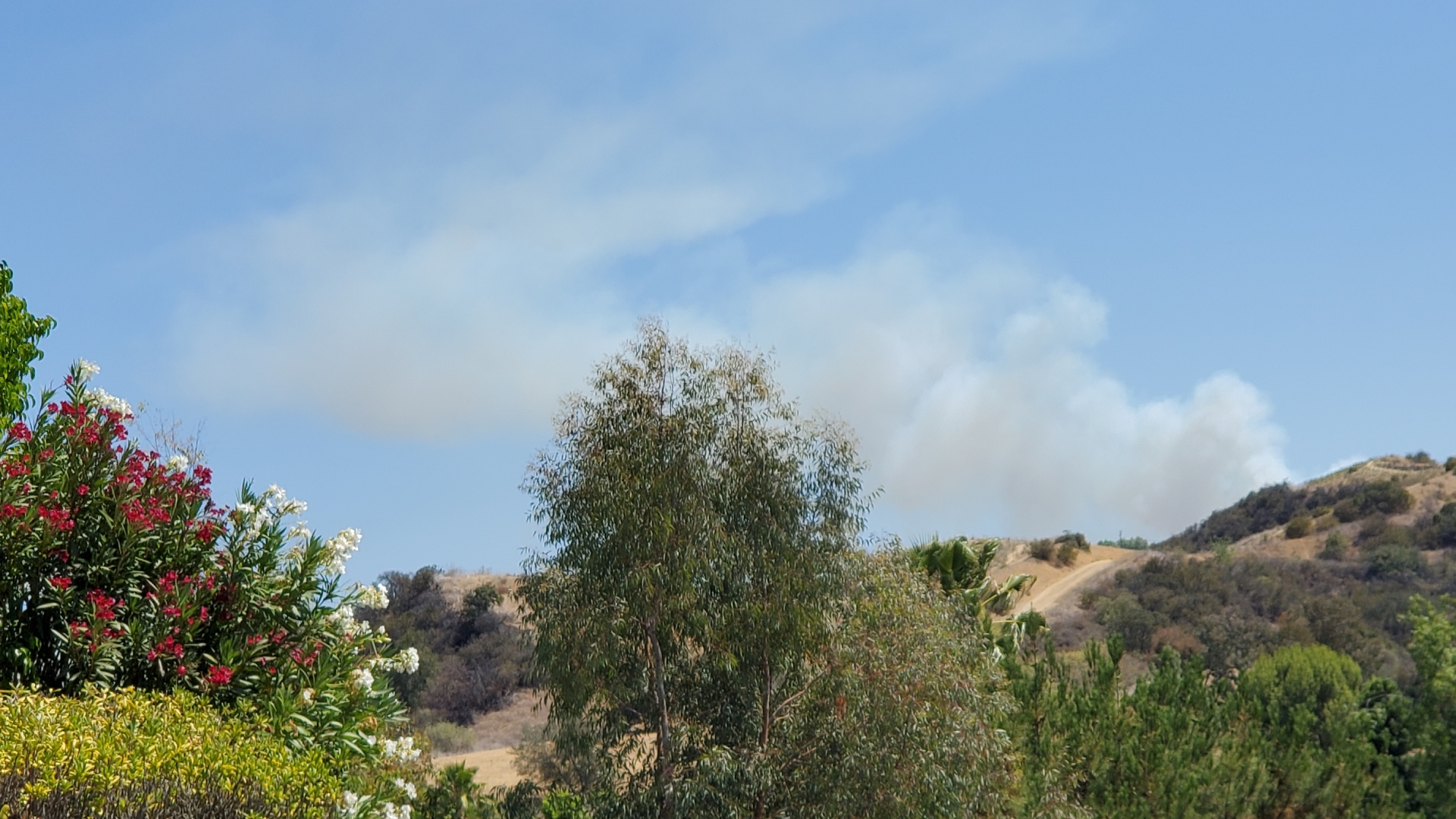EPIC-FSC has a communication plan, ECHO, which stands for Emergency Communications for Home Occupants.
ECHO complements the Community Emergency Response Team (CERT) approach to emergency preparedness. Ref: CERT

One aspect of ECHO is radio communication between clusters of households that we call Cells. Each Cell uses Family Radio Service (FRS) radios. Residents within a Cell can talk to each other using these radios. They are easy to use and highly reliable over short distances. Each Cell uses the same FRS channel.
In addition to being able to transmit and receive on FRS channels 1 through 14, our radios receive KNX on channel 15, and the City’s amateur radio repeater (CALHAM) on channel 16. Amateur radio operators have a version of the radio that transmits and receives on CALHAM – amateur radio operators can relay messages from Cells to other volunteer amateur radio operators, who can communicate with the LA County Sheriff’s Department and other emergency services.
The on/off knob on the top of the radio also adjusts the volume. Side-switches choose the channel. When you turn on the radio, it announces Power On and the Channel Number. Each time the channel up/down switches are pressed, the radio selects and announces a different channel.
The radios are rechargeable using a supplied USB cable. You can plug it into any USB power source.
Using Your FRS Radio
It’s easy and fun to use FRS radios and they can provide vital information during an emergency. EPIC will travel to your location to help you with your radio or we can meet at the library. FRS radio doesn’t use call signs or handles, so in an emergency, we suggest using your first name and street name as an identifier.
A few helpful tips in how to use the radio:
Wait a half second after pressing the push-to-talk switch or your first word won’t go through.
While you’re talking, you won’t hear anyone – you have to release-to-listen.
We share the channels with the general public, so be polite and wait until the channel is clear before talking. If you hear someone talking after you talk, your message probably didn’t go through.
We try to assign channels by neighborhood, but you might hear others on your assigned channel.
If you hear something that you can’t verify, repeat it only if you explain where you heard it.
In an emergency, Official bulletins will be read hourly on Channel 16.


